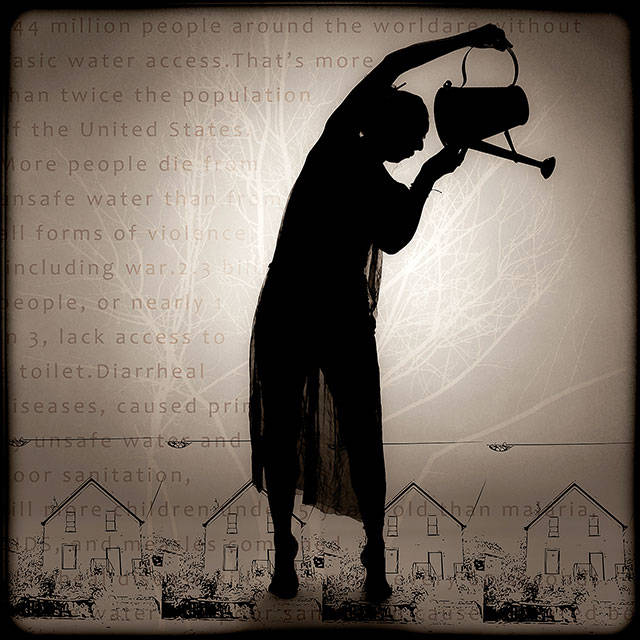Vashon Center for the Arts’ Koch Gallery will exhibit “On the Shoulders of Women,” a three-part show, with an artists’ reception from 6 to 9 p.m. Friday, March 6.
This year marks the 100th anniversary of the constitutional amendment that granted women the right to vote. It took almost a century of protest for women’s suffrage to become law, with ratification of the 19th Amendment in 1920. The exhibit will honor that landmark decision and women’s history while engaging women today to share their own stories.
When five Oregon artists — Shannon Amidon, Barb Burwell, Pamela Chipman, Kim Lakin and Kirista Trask — discovered they were all reading Mary Gabriel’s book, “Ninth Street Women,” about five New York artists, the coincidence sparked what became “29th Street Women,” one of three shows in the exhibit.
“There were five of us and five women in the book,” Oregon artist Kim Lakin said. “I suggested we do a group show and each take an artist to focus on.”
Tough assignment: These weren’t just any artists. Lee Krasner, Elaine deKooning, Grace Hartigan, Joan Mitchell and Helen Frankenthaler were trailblazers who broke the glass ceiling of the male-dominated abstract art world, displaying their unprecedented work in 1951, in the “Ninth Street Show.” Rather than make derivative pieces, the Oregon artists created new work inspired by their predecessor’s achievements.
“As we delved deeper into these women’s art-making processes, we were impressed with their boldness. The male artists were also challenging the rules, but for a woman of the 1950s to do such a thing was pretty incredible,” Lakin said. “It was Helen Frankenthaler’s actions in her art-making that inspired me. Basically, she broke rules.”
For Seattle artist and author Anna Brones, it was the “forgotten” women profiled in Molly Schiot’s Instagram account, TheUnsungHeroines, who inspired her show, “Women’s Wisdom.”
Seeking a new project in 2018, Brones joined the Kickstarter campaign “Make 100” and began to cut out paper portraits of 100 women — only a smattering of those, she said, who have influenced history “in big ways and small.” Brones hopes to challenge viewers to learn more not just about women of the past, but about those around them.
“We still struggle with listening to and believing women,” she said. “In doing so, we miss out on all the wisdom that women have to offer and because of it, our society and culture suffers.”
For artist Julie Thurber, listening took the form of visual metaphor. Browsing through a flea market in her hometown of Corning, New York, she discovered a housewife’s tale symbolically embedded in a vintage slip.
“I immediately knew her story,” Thurber said, “and I knew how to tell it. ‘Betty Crocker Under the Apron’ needed to be stained, not cleaned and starched.”
After rust dying the garment, and hand stitching words and designs to “fit the home ec persona of Betty,” Thurber searched for more vintage intimates, ranging from the Civil War to the mid-20th century, and altered the undergarments with dyes and iron tools. She calls the collection “Dirty Laundry.”
“While outer garments worn during this time period reflected the expectation of women and their place in society, ‘dirty laundry’ refers to private matters. These stories are ones women would not voice out loud for fear of the repercussion, but they are their truths,” Thurber said.
Thurber designed the show to be interactive: Pieces hang from clotheslines. Text is read by handling the garments. Paper, pencil and an envelope encourage visitors to write and leave their own stories.
“This show first appeared in Corning, in September 2019,” Thurber said. “The stories and reactions that visitors left me were amazing. I am gathering them to create a post-show work about what modern-day women have to say about their past and their present.”


